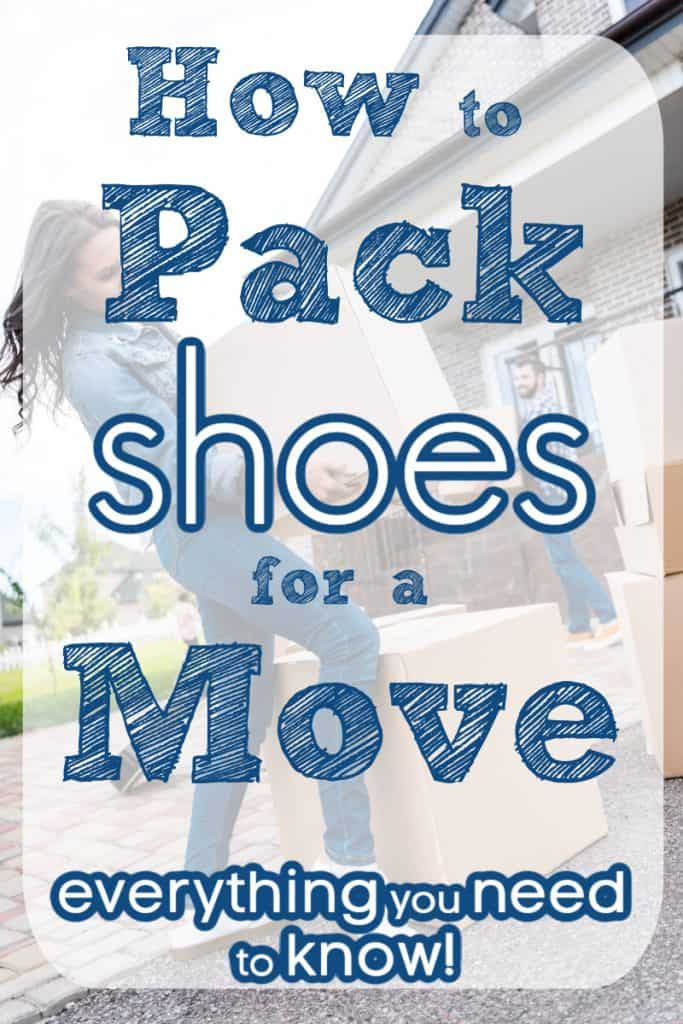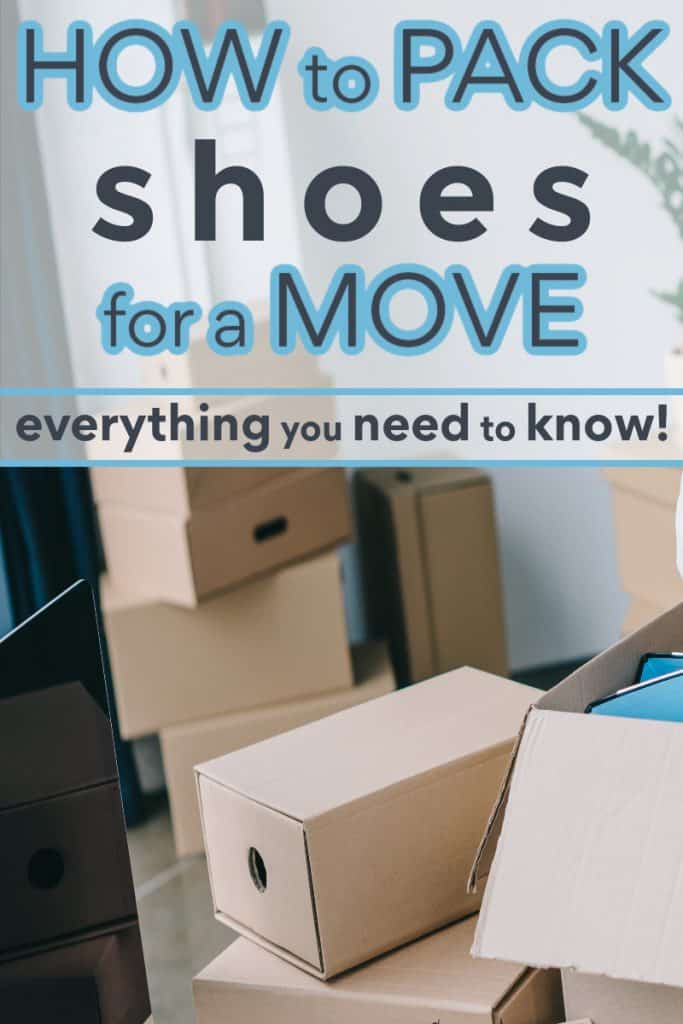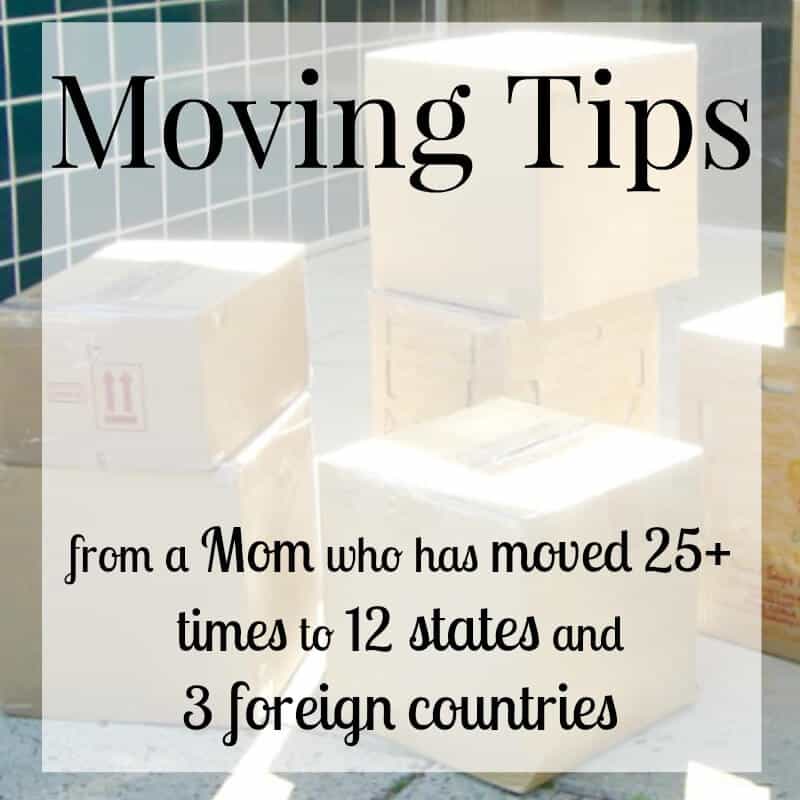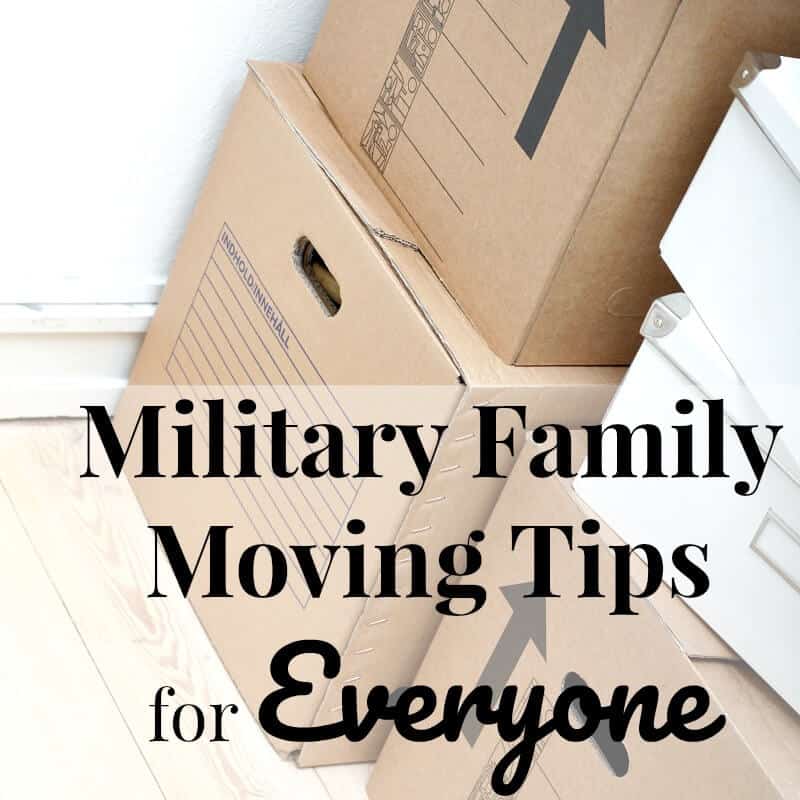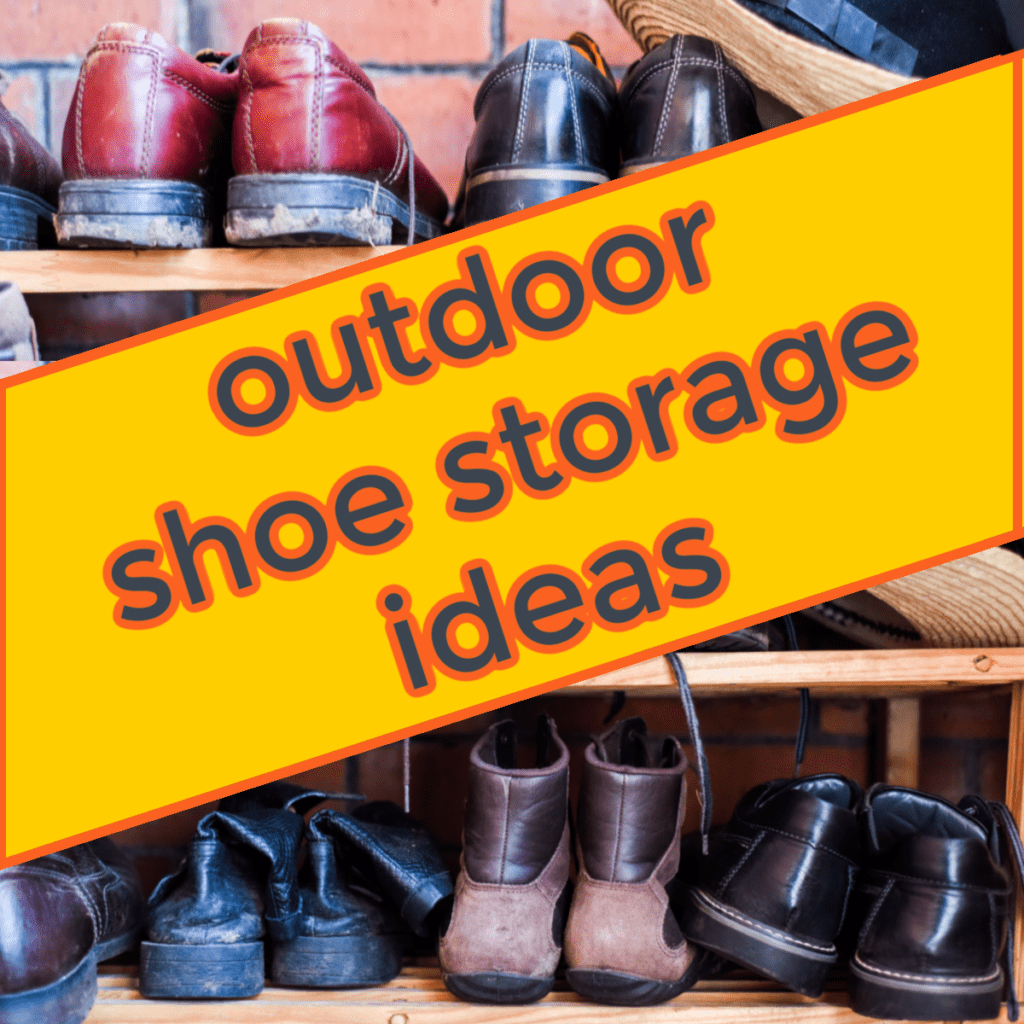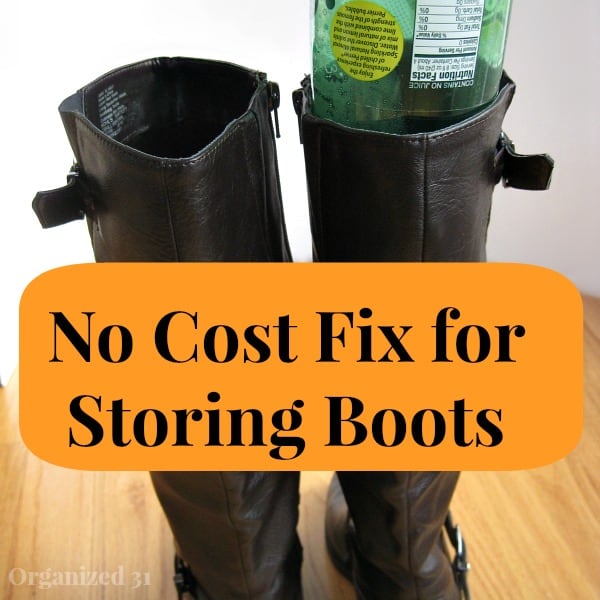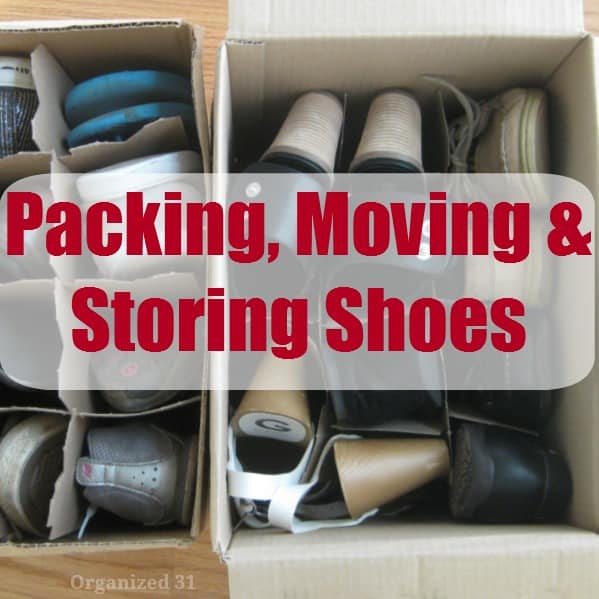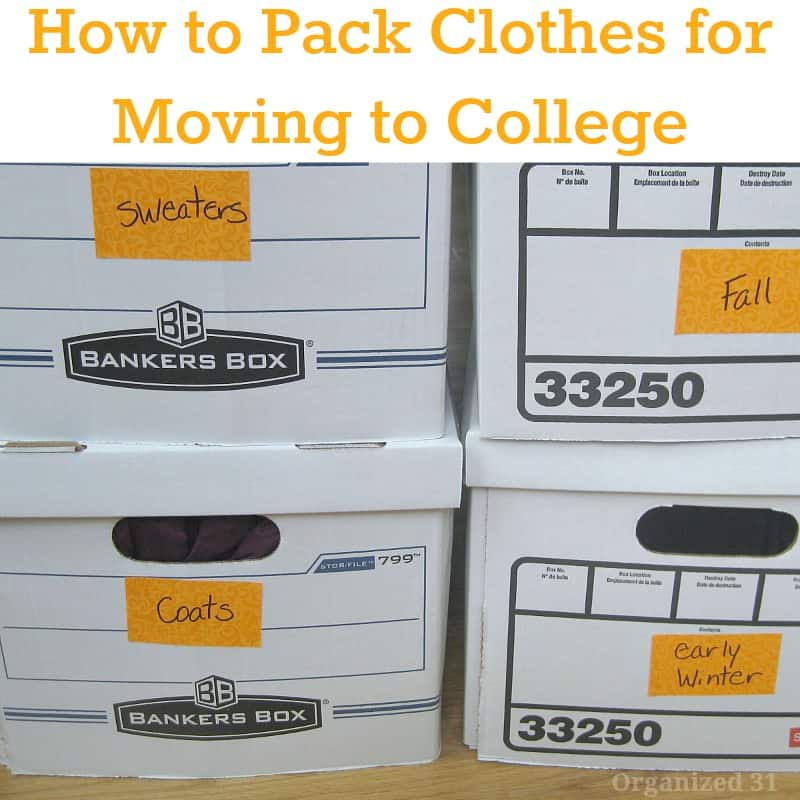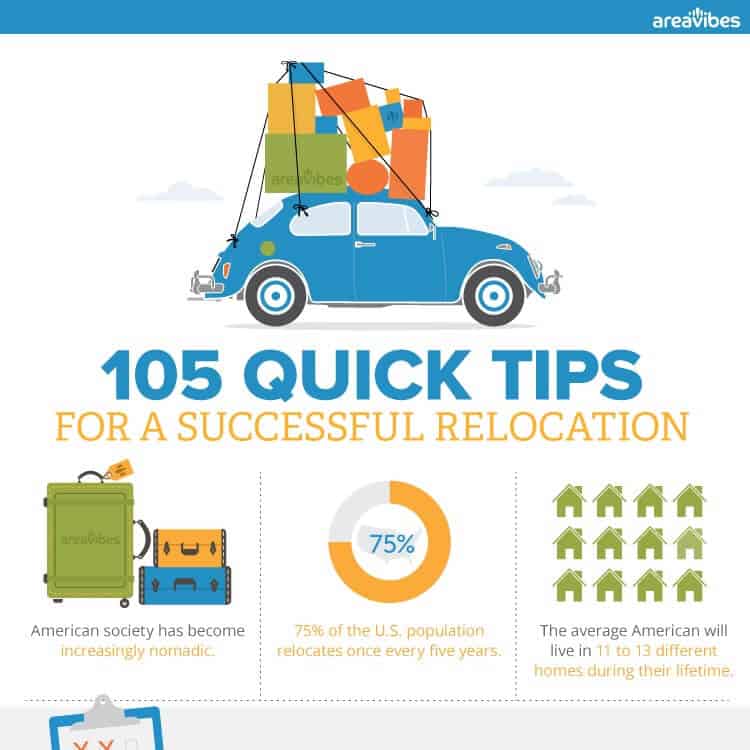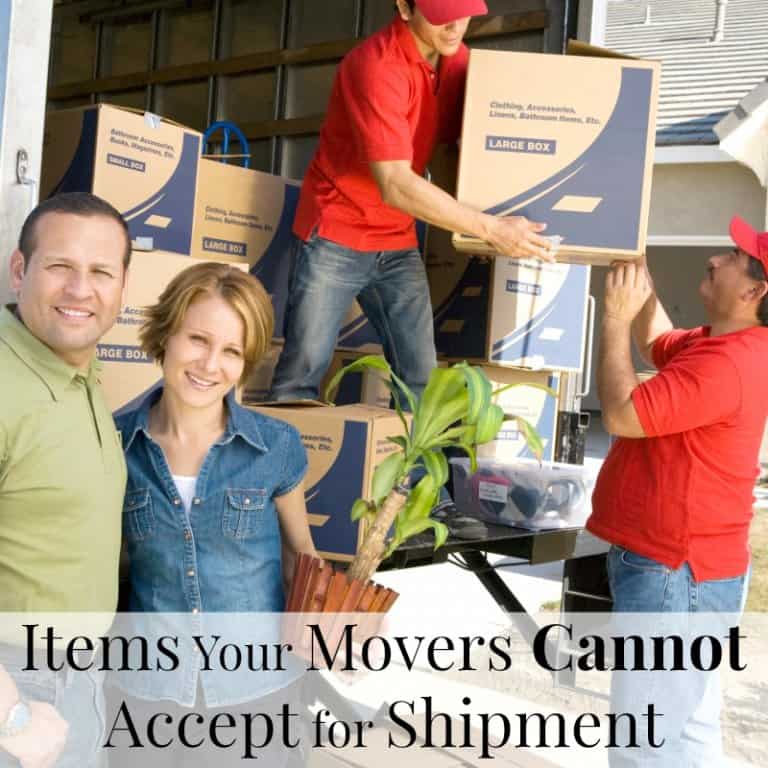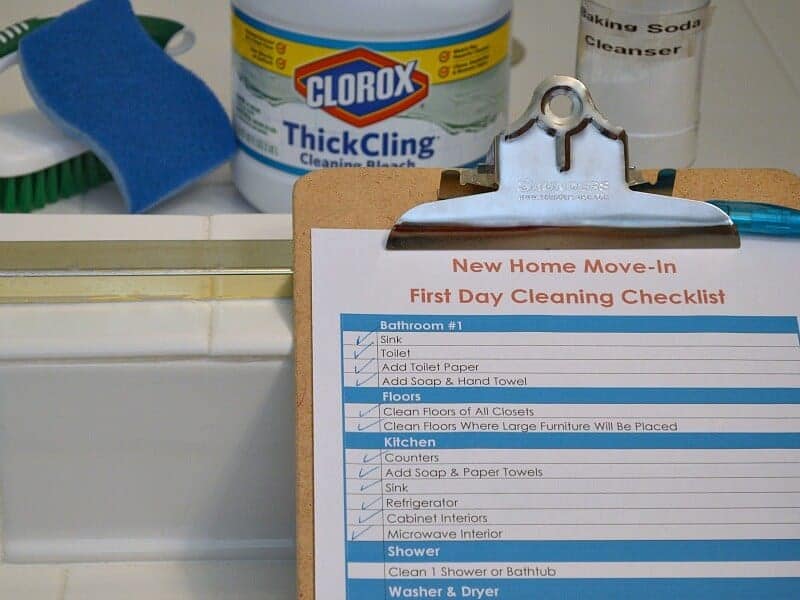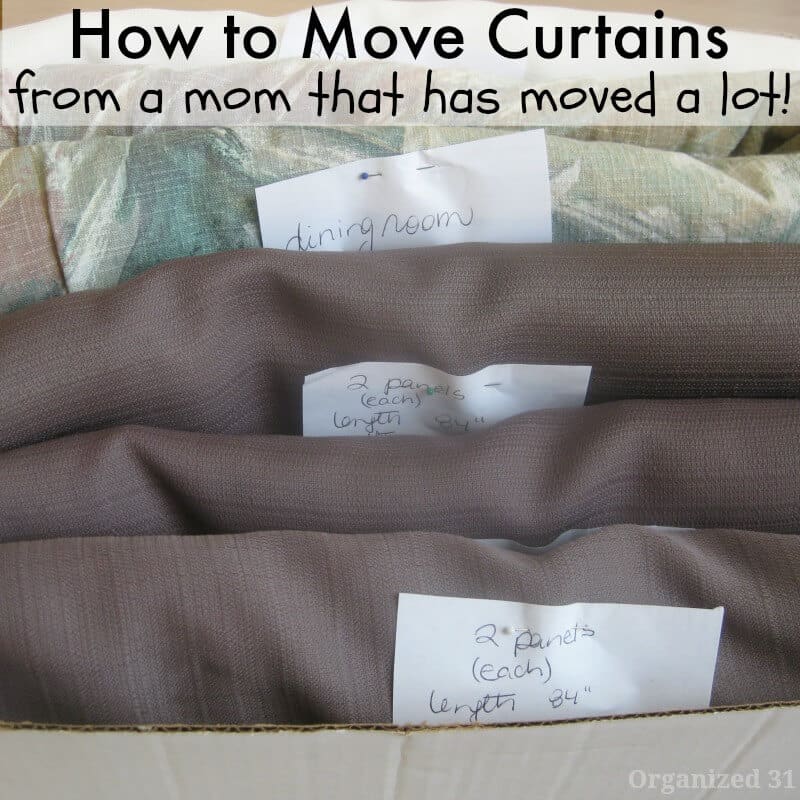How to Pack Shoes for Moving – Everything You Need to Know
This post may contain affiliate links provided for your convenience. We earn commissions if you shop through the links on this page. I am also an Amazon Associate and earn from qualifying purchases Read my full disclosure policy.
Whether you have a few favorite pairs or a giant, treasured shoe collection, these 60+ tips and recommended products on how to pack shoes for moving will protect your collection of shoes and take the stress out of packing.
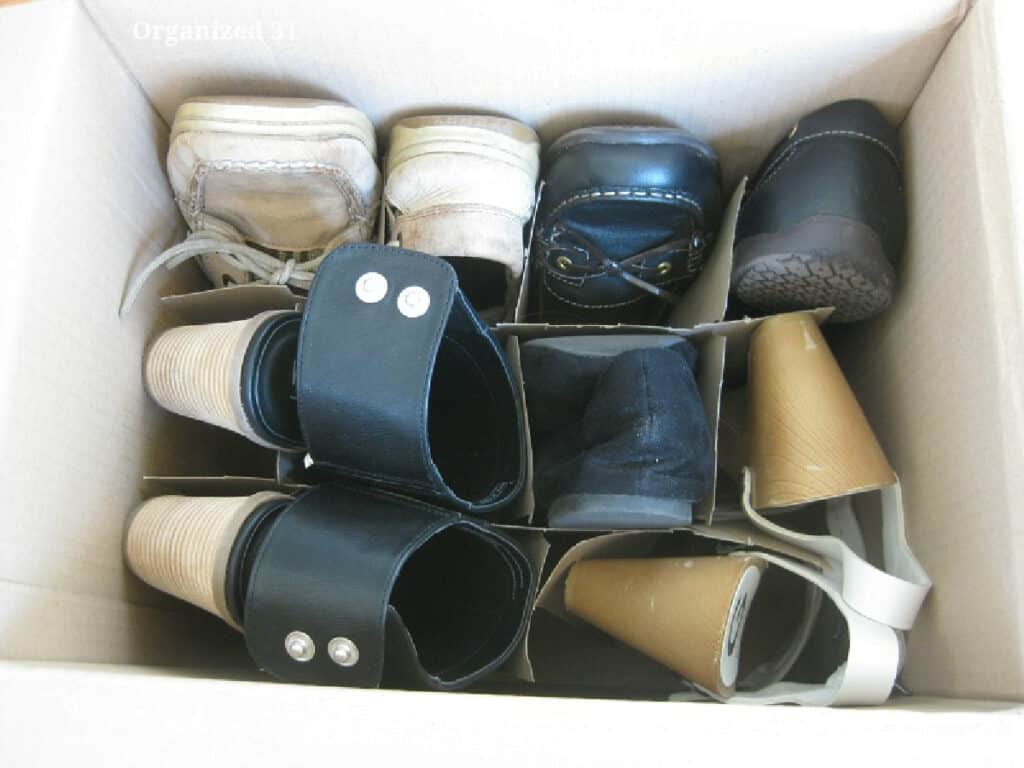
I’ve personally moved more than 25 times, with some moves across town and others across the country and even the world. I’m sharing useful tips that work for all types of moves and situations.
Thanks to the military, I think I’ve moved in almost every possible moving situation:
- Moved across town with friends helping and just a small house worth of belongings.
- Moved across the country with a large house full of stuff and a long-distance moving company.
- Moved overseas 3 times (and back, so a 6 total moves) with a moving company.
- Moved ourselves across town with a large house full of things.
- Moved with a baby, including overseas.
- Moved with 3 young children.
- Moved with a dog, including overseas.
- Moved with a leopard gecko.
With all my personal moving experience and my professional organizing experience, I’ve collected everything you need to know to pack your shoes for a move.
How to Pack Shoes for Moving
There are many specific areas of preparing and packing shoes. I’ll cover them one by one. I’ve also included a frequently asked questions section with specific tips below.
Declutter & Prepare
Declutter
Most people don’t enjoy decluttering, but it’s a really good idea, especially before a move.
- There’s no reason to put energy into packing shoes you don’t wear.
- There’s also no reason to pay money to move shoes you don’t wear.
The best way to declutter is to gather all your shoes together in one place and go through them one pair at a time. If you have limited space or a lot of pairs of shoes, you can gather all the shoes in one category together at at time to review. For example:
- High heels or formal shoes
- Everyday shoes
- Winter boots or specific season shoes
- Leather shoes
- Athletic shoes
- Flip flops
- Specialty shoes
- Work shoes
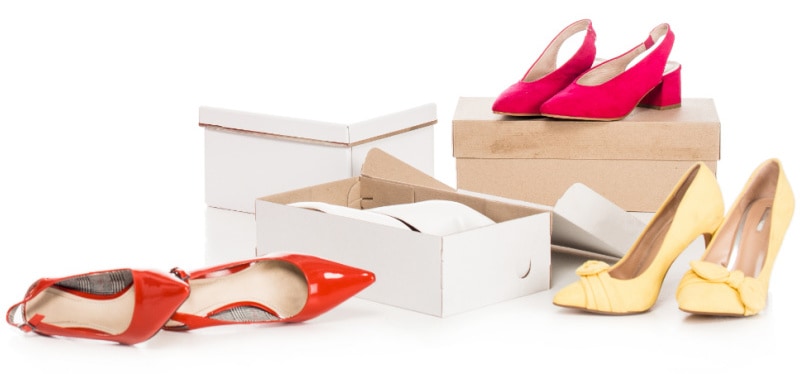
To evaluate a category of shoes:
- That may mean gathering shoes from different areas of your home. Take the couple of extra minutes to do that.
- Examine every pair of shoes and decide if you want to keep them. You should only be keeping shoes that are in good condition and you still wear.
- Shoes you should not keep:
- Ones that hurt your feet. It doesn’t matter how much you spent, if they aren’t comfortable, they need to go. You deserve to wear a comfortable pair of shoes every day (life is too short for foot pain.)
- Ones that are out of style. Sure that style may come back, but there will be a different twist on the style. The one exception may be collectible shoes.
- Ones that no longer fit your lifestyle. If you used to wear stiletto shoes to work every day but now can’t wear them, they need to go.
- Ones that are damaged need to go.
- If there are minor repairs needed and you will have them repaired in the next 2 weeks, you can keep them.
- Ones that have excessive scuff marks. Consider whether the marks can be repaired and whether you actually will repair them.
- Ones that are stained. Unless you are going to take the time to clean the shoes, and in the next 2 weeks, they need to go.
- Shoes you just simply don’t like. It doesn’t mater how much they cost, if you’re not wearing them, they need to go.
- Now look at how many pairs of shoes you still have in that category. Ask yourself the hard questions:
- How many pairs do you really need?
- This is a different question than how many pairs you want. You are the only one that can answer this question, but take the time to really think about your answer.
- How many pairs will you have space for in your new home?
- How many pairs can you afford to pay to move?
- How many pairs do you have the time and resources to pack?
- How many pairs do you really need?
Go through the same process with each different category of shoes. Work with family members, if necessary, to go through the same process with all of their shoes.
Donate
Check with your local donation center for their guidelines on shoes they can accept. I’ve worked in charitable thrift stores and needs and requirements change over time.
- They may be in need of a particular type of shoe and be willing to accept more worn pairs. For example, tennis shoes, work boots and boots are often in high demand.
- They may not have enough space for shoes that are not in demand, such as formal wear or delicate footwear.
- Please don’t just take a large number of shoes to donate without first checking donation guidelines. Charitable organizations have to pay trash disposal fees for items they can’t use, so dropping off unneeded shoes is not helpful.
Clean
Take the time to clean all your shoes before a move.
- You never want to leave dirt or debris on shoes. It can stain and damage shoes. Take the time now to protect your expensive pairs and favorite shoes in particular.
- You don’t want to pack dirty items with all your other belongings.
- You don’t want to pack dirty items that may attract pests to your belongings.
- Why do you want to have to unpack dirty items when you’re overwhelmed settling into your new home?
Be sure to check for the correct procedures to clean the specific shoes and fabrics you need to pack.
Some people choose to use an anti-bacterial spray designed for shoes to prevent odors and bacterial growth. I haven’t personally used it, but if you’re concerned, you should look into the available options.
Air Out Shoes
Be sure to allow shoes time to air out after cleaning and before packing. This is also important for athletic shoes and any shoes or boots that may gather moisture.
You want to eliminate all moisture before packing shoes so that mold and mildew don’t grow in and on the shoes.
Repair
Make all necessary repairs prior to your upcoming move. While you’re busy now, you’ll be just as busy, and maybe more so, in your new place. Also, you are probably more familiar with shoe repair resources in your current location.
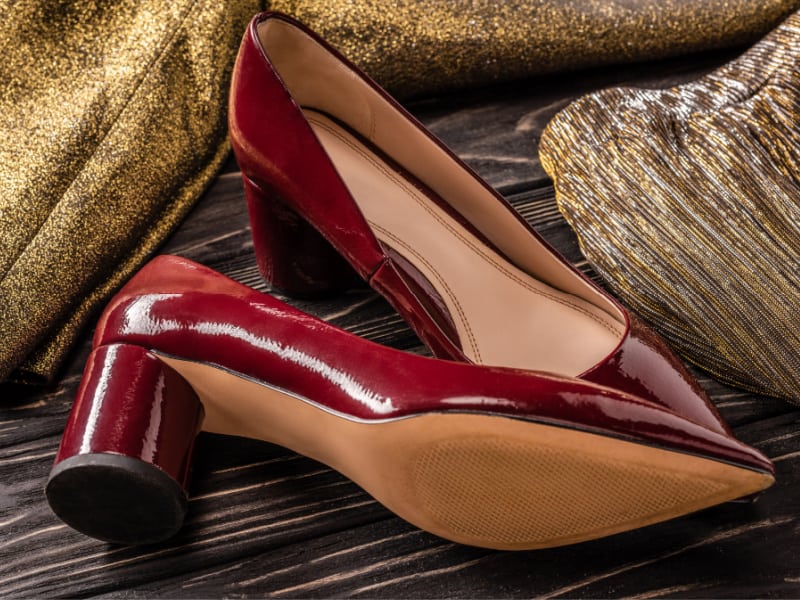
Sort Shoes for Packing
Sort your shoes into:
- Ones you can pack now.
- Formal shoes, party shoes, seasonal shoes, sports shoes, etc.
- Any shoes you want to keep but don’t need to wear the next few weeks until the move.
- Ones you can pack the week of your move.
- Pare down the number of shoes you still need during the week of your move.
- Ones you want to take with you in your suitcase.
- Your most comfortable pair of shoes that you’ll wear on the day of your move.
The more shoes you can pack ahead of time, the better for your stress level and the better job you can do carefully packing. Do everything you can ahead of time and not leave for the very busy last minute of your move.
To help you with your entire move, I’ve created a 90-page Comprehensive Moving Checklist Planner resource based on my experience with 25+ moves.
To compliment it, I also created Printable Moving Labels and Inventory Sheets to make it easier to organize your move and moving boxes. And a 24-page Moving Themed Kids’ Activity Pack to help keep kids busy during the move.
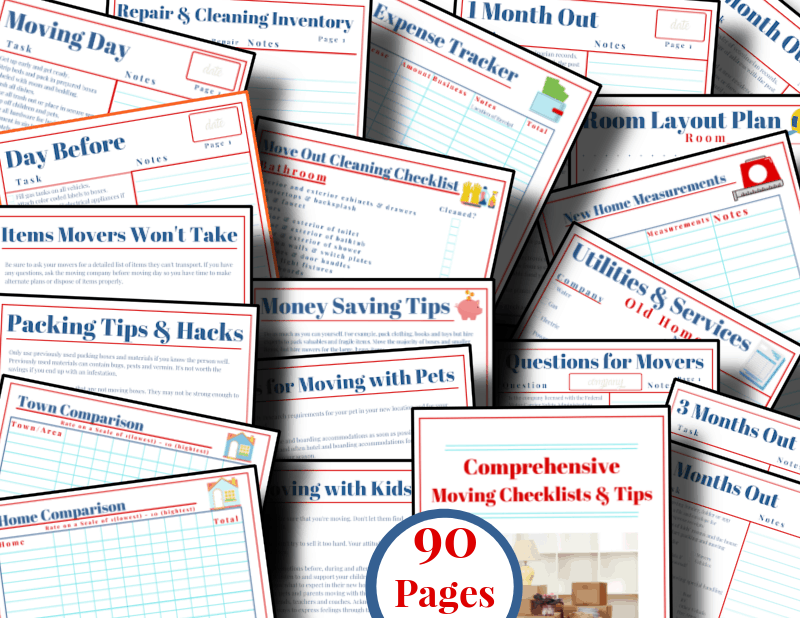
Packing Shoes
While every step of preparing shoes for a move is important, the steps involved in packing shoes are critical in preventing accidental damage during shipment.
Wrapping Shoes
It’s best to wrap shoes in clean packing paper. Used paper is not a good choice because you just never know what dirt, oils or even pests are in the paper. You don’t want to ruin your shoes with dirt or infect all your belongings with bugs or pests.
It’s best to use paper packing wrap because it’s designed for packing items for a move. You can also purchase this from your local moving company or hardware store.
It’s not advisable to use plastic products to wrap shoes because they don’t allow shoes to breathe while packed, which can facilitate the growth of mildew or mold.
Some people do choose to use bubble wrap for delicate or very ornate shoes. If you decide to use anything plastic, make sure that shoes are entirely dry and aired out well before packing.
Many experts specifically advise against using plastic bags for wrapping shoes because it’s too easy for for the bags to tear and then damage can occur to the shoes.
To wrap shoes for moving:
- Lay the sheet of paper out.
- For shoes with stilleto heels, buckles or other protruding areas, you may want to use a stack of two or three sheets of paper to better protect your shoes.
- Place one shoe in the corner of the paper and wrap it once or twice.
- Place the alternate shoe on the paper next to the wrapped shoe in the opposite directions (heel to toe) and wrap the pair up together.
- I prefer to place the soles away from each other. This helps protect the more delicate parts of the shoe when they’re packed in the box.
- If the shoes are small or thin, you can wrap a second pair of shoes in the large sheet of paper. However, I prefer to cut the sheet of paper in half for smaller shoes. It makes it easier to wrap and keeps the bundle neater for packing.
You can also use cloth duster bags to wrap shoes instead of wrapping paper. Cloth is best so that your shoes can breathe. The advantage to the duster bags is that you can use them later to protect shoes in your closet and use as travel shoe bags.
- Cloth duster bags are available on Amazon
- I have 2 simple DIY tutorials to make your own travel duster bags for shoes. These are tutorials I shared many years ago, but the tutorials are still valid.
To further protect special shoes:
- Protect the toes of delicate shoes by packing clean tissue paper in the toe.
- You can use socks and washcloths to stuff the toes of larger shoes and boots.
- Wrap shoes with delicate finishes, like sequins or beads, in tissue paper before wrapping them in packing paper.
- For shoes with delicate embellishments, I prefer to wrap the embellishment in tissue paper, then the entire shoe in tissue paper and finally in packing paper.
- If you feel that you need to use bubble wrap to protect exceptionally delicate footwear, use tissue paper next to the shoe and then bubble wrap as the outside layer.
- When wrapping boots, use socks, washcloths, pool noodles or clean empty plastic bottles slipped inside to keep the shape of the boot before you wrap them.
It’s your choice whether you want to wrap shoes that will be shipped in shoe boxes. My personal rule of thumb is that I wrap expensive, delicate or special shoes even if they’re being packed in a shoe box and then pack the shoe box in a moving box.
Most of us are too busy packing and moving to be able to wrap every pair of shoes that are already in a shoe box, but you should decide if that additional protection is worth the time it will take.
Products that can help you protect and pack your shoes:
Packing Shoes in Boxes
Shoe Boxes
If you have the original shoe boxes, it’s a good idea to pack your shoes in the shoe boxes. But it’s important that you only use clean shoe boxes. You don’t want dirt or grime to mark your shoes or to attract pests to your shoes or even your entire shipment on the moving truck.
If you have time or have special shoes, secure the lid of the shoe box with tape or a rubber band. Painter’s tape or washi tape will attach the lid without damaging the lid for future use. This keeps your shoes from falling out of the shoe box during the move and being damaged.
If you don’t have shoe boxes, you can purchase shoe boxes to protect the shoes during the move.
Packing Moving Boxes
I prefer to pack both shoe boxes and shoes that are just wrapped in packing paper vertically. When you pack the shoes vertically it reduces the amount of weight pressing down on the shoes on the bottom. If you have shoes with extended pointy toes, packing them vertically may not be the best choice, but it is for most pairs of shoes.
If you choose not to pack shoes vertically, you should:
- Always place the heavier shoes on the bottom of the box and the lighter shoes on the top to protect them.
- Place shoes in shoe boxes at the bottom of the packing box with wrapped shoes on top.
- Place larger and heavier boxes on the bottom, with smaller and lighter boxes in the upper layers.
Additional tips for packing shoes
- Don’t wrap or pack shoes with the soles of shoes on the tops of other shoes. The soles of shoes are unbelievably dirty and germy, so don’t transfer that to the part of the shoe that you touch. Just remember to always keep the shoe sole next to other soles.
- Always dry and air out shoes that have an odor or have had sweaty feet in them.
- Consider taking steps when packing shoes with an odor or potential odor.
- Crumple newspaper, wrap it with tissue, then insert inside of shoes. You want to wrap the newspaper with tissue paper so the newsprint ink does not smudge or stain your shoes.
- Use charcoal sachets designed for this purpose.
- Use shoe deodorizer packets.
- Use silica gel packs designed for shoes.
- Wrap and pack shoes together as a pair to make it easy to unpack in your new place. Don’t just throw a bunch of loose shoes in a box. It doesn’t save you time because you’ll have to untangle them all and then match the pairs together when you’re tired at the end of the entire move.
Frequently Asked Questions
How can I move my shoes without a box?
If you don’t have shoe boxes for your shoes, you can consider purchasing shoe boxes. While it’s not necessary, but it may be a good idea for your more delicate shoes, designer heels or expensive shoes.
If you don’t have shoe boxes, you can still place shoes in a moving box. It’s best to:
- Wrap each pair of shoes carefully.
- Place shoes vertically in a box and pack them securely in a moving box so that they won’t shift and be damaged.
- Never place heavy shoes on top of other shoes.
- It’s better to pack shoes in a smaller or medium box rather than a big box. A smaller, carefully packed box of shoes is less likely to cause damage and is much easier to lift.
You can choose to use free wine or alcohol boxes from the grocery store. The box should have dividers and be tall enough to hold your shoes. This option works well for casual shoes, flats, sandals and flip flops.
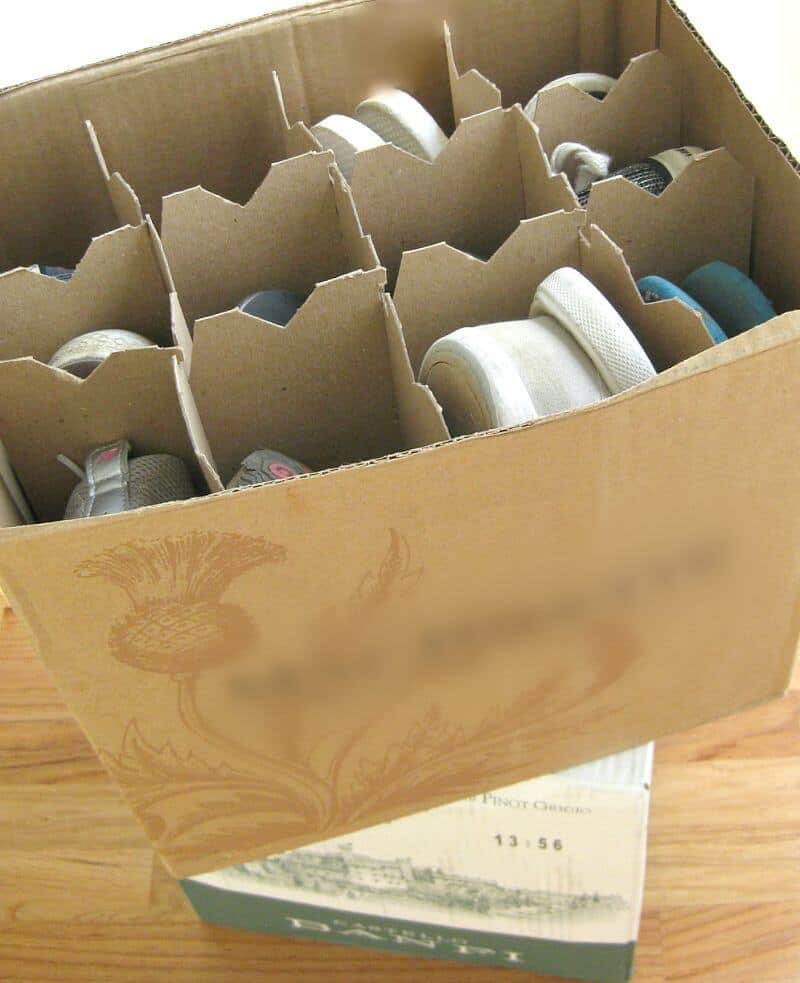
If you’re moving yourself across town, you can choose to place well-wrapped shoes vertically in a milk crate. The handles make it easy to carry the milk crate full of shoes.
How to pack shoes for moving with shoe boxes?
I recommend securely attaching the lid to the shoe box and filing the individual boxes vertically in the larger box for moving. This helps prevent serious damage to the shoes at the bottom of the moving box.
If you choose to pack shoe boxes horizontally, be sure to place heavier boxes at the bottom of the moving box. Heavier and larger boxes should be packed first. Then pack smaller and lighter boxes on top. You can place other loose, lightweight objects like the closet door shoe hanger in any empty spaces in the packing box.
How to pack shoes for long-term storage?
Storing shoes in a climate-controlled and humidity controlled long-term storage facility is the first step in protecting your expensive footwear. Of course, stable climatic conditions are also recommended as the best care for all your belongings.
When packing shoes for storage, take the time to wrap shoes to protect them. Carefully pack shoes into shoe boxes and then into a moving box using the recommended steps above.
Using products to counter humidity and odor during long-term storage may be recommended. Research your shoes and recommendations for those particular materials. Consider using:
- Charcoal sachets designed for this purpose
- Shoe deodorizer packets
- Silica gel packs designed for shoes
How to pack shoes to save space?
Turn the shoes in a pair so that the heel of one shoe lines up with the toe of the other shoe. This is the most compact way to wrap shoes.
Pack the larger and heaviest shoes first on the bottom of the box. Then fit the smaller pairs, flip flops and flats for example, in the spaces in between.
I prefer to stand shoes up vertically rather than lay them down flat. This is the same concept that works so well in the wine box ideas shared above. Stacking shoes vertically allows you to better protect them from physical damage that occurs from the weight of the upper shoes pressing down on the shoes on the bottom of a box.
How to pack shoes for college?
All these packing tips work as well for packing shoes for college, but specific tips are:
- Be very selective in which shoes and how many shoes you pack. You’ll have extremely limited space and there’s no reason to pack and move shoes your won’t have space for.
- We used the wine box idea above for moving and storing shoes at college for both of my daughters. It was their preferred, compact way to store shoes in their dorm rooms. The smaller size of the box made it easy to pack in the car and carry into the dorm.
- We also used sturdy plastic milk crates for moving shoes. We packed them vertically in the milk crate and the handles of the crate made it easy to carry.
- You can place athletic or casual shoes in duster bags and then in a duffle bag for moving.
More Moving Ideas
Moving Tips and Advice – Everything I know from 25+ moves moving across town, across the world and everything in between.
Moving Out of State Checklist – A free checklist to help you move out of state.
Military Family Moving Tips Everyone Can Use – If anyone knows moving, it’s a military family and you can use these tips, too.
More Shoe Projects and Ideas
Outdoor Shoe Storage – More than 100 tips, products and DIY projects for outdoor shoe storage ideas. There’s something for every need, budget & DIY skill level.
Storing Boots – An easy and free tip.
Packing, Moving & Storing Shoes -Tips for packing, moving and storing shoes from a Mom with 25+ moves. The best way to pack, move and store shoes (and it’s free & earth-friendly).
Be sure to pin for later so you can find all these tips on how to pack shoes for moving whenever you need them.
For my top moving and travel tips, hacks and printables check out the table below. You can scroll though the table and look for ideas or search for specific ideas with the magnifying glass in the upper right-hand corner (on desktop). Click on the topic and then click through the specific article.

I’m a mom of 3, a veteran, military spouse. I’ve moved into 20+ homes all around the world. My passion is helping busy people make the space and time for what’s really important to them. Learn more about Organized 31 and me.

